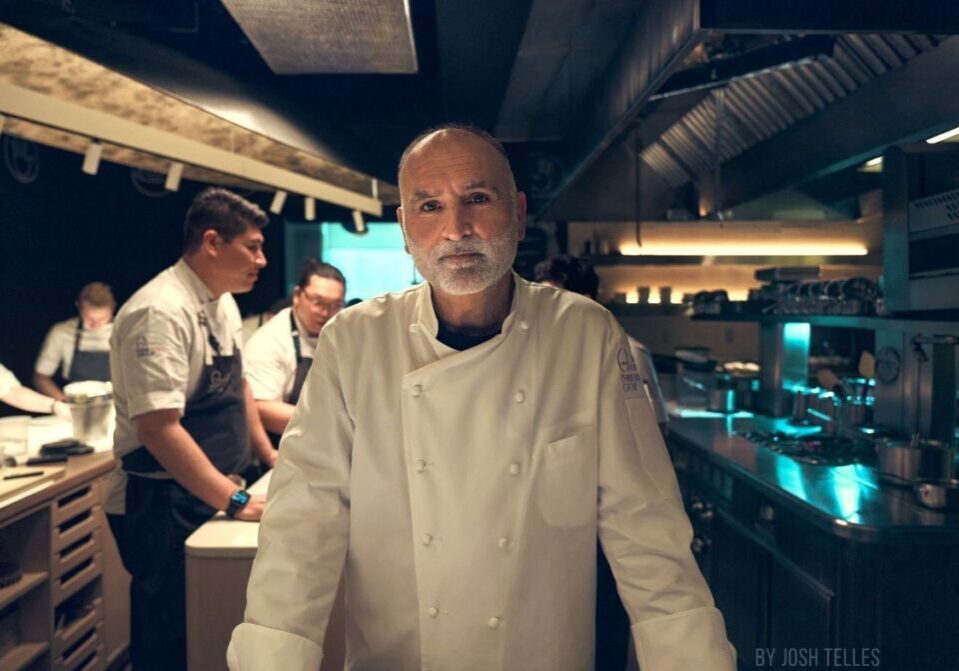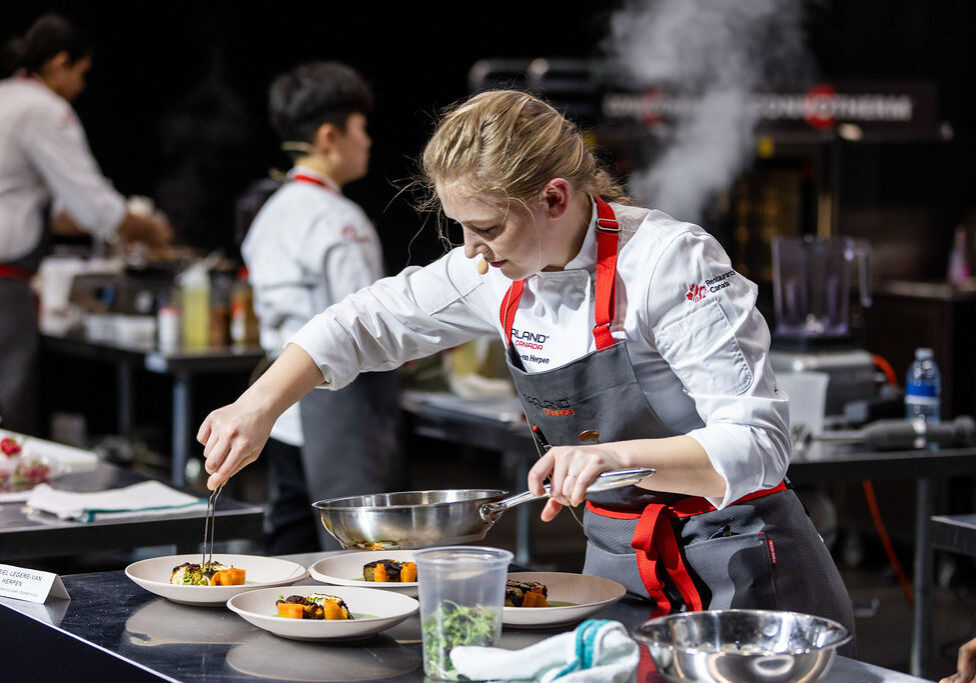Food And Restaurant Trends Changing How People Eat In 2020
Canada’s hospitality event of the year shares upcoming food and dining trends TORONTO – December 12, 2019 – Canada’s largest foodservice and hospitality trade event has released its list of the top trends that you can expect to see dominating next year’s dining experiences. From March 1-3, 2020, RC Show will once again host Canada’s largest gathering of industry experts to educate and inspire the foodservice and hospitality community and advance the potential of the Canadian restaurant sector. For its 75th year, the show will be sharing insights to help businesses “Diversify and Thrive” in today’s rapidly changing market landscape…
Canada’s hospitality event of the year shares upcoming food and dining trends
TORONTO – December 12, 2019 – Canada’s largest foodservice and hospitality trade event has released its list of the top trends that you can expect to see dominating next year’s dining experiences.
From March 1-3, 2020, RC Show will once again host Canada’s largest gathering of industry experts to educate and inspire the foodservice and hospitality community and advance the potential of the Canadian restaurant sector. For its 75th year, the show will be sharing insights to help businesses “Diversify and Thrive” in today’s rapidly changing market landscape by embracing what’s new and noteworthy, while at the same time bringing back the classics and making unexpected connections to bring both on-trend and profit-boosting ideas to the table.
Here’s a taste of what you can expect:
- Healing with Every Sip and Bite — Consumers are more health conscious than ever. Next year we will continue to see a surge of plant-infused beverages and concoctions featuring super food ingredients like camu camu, spirulina, yerba mate and matcha. This trend will evolve in 2020 to include new stress-fighting, mood-boosting and energy-enhancing adaptogens, like macadamia milk, ashwagandha and MCT (derived from coconut oil.) The new term to watch for in relation to this trend is gastrophysics, which translates to how food makes you feel rather than viewing it solely as sustenance.
- New and Novel at the Bar
- Sober Curious — Consumers are getting serious about their non-alcoholic drink options. Shirley temples have gone by the wayside and passion fruit, kombucha-infused beverages and tropical tea slingers are making their way onto drink menus and Instagram accounts across Canada. Don’t expect them to be cheap either. With the inclusion of an assortment of new ingredients and improved presentation serving styles, expect prices to be on par with base mixed drinks.
- Premiumization — Millennials are consuming less alcohol than previous generations but are “trading up” to more premium and heightened experiences. They are looking for Instagramable worthy drinks that are both delicious, memorable and deliver beyond expectations. This trend will continue to grow and you can expect to see fermented, infused and cultured drinks, as well as indulgent alcohol offerings like sangria sorbets, bourbon and chocolate milkshakes.
- Culinary Mixology — Watch for the mixologist to begin to take centre stage beside the chef in 2020. For the last couple years, we have seen the lines between kitchen and the bar blur. The precision and art now being incorporated by the modern mixologist is rivalling chef creations and taking cocktails to a new level of complexity. And, just as we’re seeing in kitchens around the world, watch for more mixologists using new and dynamic flavour combinations, making use of organic, plant-based whole foods, as well as local, natural bitters, syrups and purees made in-house, and other innovative infusions in their libations — all while trying to achieve zero waste.
- Transformative Spaces — Restaurateurs are creating memorable experiences not just with food, but also with concepts making innovative use of space. For example, we’ve recently seen dining experiences take place in human-sized snow globes in a number of cities across Canada, as well as a crane-suspended restaurant in Montreal hosting patrons 50 metres off the ground. We expect restaurateurs will continue to think outside the box to come up with ideas that entertain and deliver a unique sensory experience to keep customers coming back. Businesses are also focusing on ways to maximize their space and become multi-functional while upgrading their facilities to include gender-neutral bathrooms and other ways to be more inclusive and accessible for their customers.
- Wood-fire Cooking — While this cooking method is not new, it has made its way onto the 2020 trends list… with a fire-hot twist. Wood-fire stoves are the norm for creating pizzas, but chefs are rediscovering their benefits for cooking so much more. The new generation of this equipment is virtually smokeless and therefore has no smoke ventilation issues. This trend is fueled by celebrity chefs who are creating Instagrammable flair moments, but the trend is not just about doing it for the Gram. When cooking with wood, chefs can experiment with a whole new level of flavour, choosing different types of wood to create different taste notes.
- High-Touch Tech — Consumers are pressed for time and are looking for faster transactions. Touch technology has helped quick-service restaurants meet these demands with touchscreen, self-ordering kiosks, and this is expanding across the sector in all “grab and go” environments. But the technological revolution is not just for quick-serve establishments. Tableside tablets are becoming a new must-have technology for full-service restaurants. Placing your order, selecting a wine and paying your bill on a tablet is moving into the mainstream. Watch for the growth of apps on your phone to order and pay within restaurants as well. This gives the consumer the dining pace they desire, the ability to customize their orders, and can also help operators better manage staffing shortages being felt throughout the industry.
- Customizable Ghost Kitchens — Ghost kitchens are moving past their original model of being a nondescript, bricks and mortar kitchen in an industrial area. Now we see established restaurant chains, like HERO Certified Burgers offering restaurants the ability to sell multiple brands out of a single kitchen. Also, brands like Kitchen Hub are forming ghost kitchen commissaries where several brands join under one roof to share the burden of operational costs. These are solely designed to support the various networks driving the growth of home delivery. This and other new models will allow brands to grow, without the cost of building a brick and mortar restaurant, with the ability to provide more diverse menu options to consumers, especially in rural communities.
- Mainstream Multicultural Mashup — What makes Canada stand out on the international stage is the way we’ve allowed different cultures to work so well together — politically, socially and even on our plates. Twenty-twenty will be the year where chefs explore a wide range of new cultural flavours coming together to reflect our landscape and culturally diverse roots in ways we can’t even begin to fathom. Think Korean kimchi Canadian Beef burgers, Indigenous meets Japanese buffalo tempura and Peruvian-based creative takes on Sudado de Mahi, Tiradito de Salmon and Chocolate Aji Panca ice cream.
- Waste Not, Want Not — With concerns about climate change on the rise, the zero-waste movement will continue to take centre stage with restaurant operators implementing new zero-waste techniques and food systems within their operations as they seek to reduce their environmental footprint and increase their savings. Restaurants are looking for all sorts of ways to reduce waste, from cutting down on single-use items to incorporating unused kitchen ingredients into drinks and vice versa. As restaurants continue to struggle with razor-thin profit margins, foodservice operators will find that utilizing all aspects of the products they source is simply good for business, and that consumers will reward them for making strides to become more environmentally sustainable.
- Restaurants with a Purpose — More restaurants are taking a stand on key issues beyond the food they prepare and balancing purpose and profit. Consumers are looking to align with restaurants who conscientiously consider the impacts of their decisions on their workers, customers, suppliers, community and the environment, especially Gen Z and millennials who put their money where their beliefs are. In 2020, we will continue to see purpose-driven operations that use business as a force for good to grow and more B Corp certified establishments on the scene.
- Not New, But Not Going Anywhere — In 2020 you can expect to see lab-based “motherless” meat, plant-based proteins and other protein alternatives such as insects continue to appear on menus.
-30-
If you’re excited about these trends and would like to attend the RC Show Media Preview on Jan. 30, sign up for media accreditation for the RC Show or arrange an interview, please contact:
Media Contacts:
Tianna Goguen │ 416-360-6522 │ tianna@punchcanada.com
Lisa Raffaele │647-837-1265│lisa@punchcanada.com
Follow us and the conversation on social: #RCShow20 @RestaurantsCA @RestaurantsCanada
About RC Show
Canada’s largest foodservice and hospitality event, RC Show showcases cutting-edge products, pioneering people and transformative ideas. Attendees will find three days of programming to learn from and network with Canada’s top foodservice professionals, product and service innovations included in eight curated pavilions across a 250,000 sq. ft. show floor and on-the-floor feature activations that bring the latest business concepts to life. Learn more at rcshow.com
About Restaurants Canada
Restaurants Canada is a national, not-for-profit association advancing the potential of Canada’s diverse and dynamic foodservice industry through member programs, research, advocacy, resources and events. Canada’s foodservice sector is an $89 billion industry that directly employs 1.2 million workers, is Canada’s number one source of first jobs and serves 22 million customers across the country every day.



